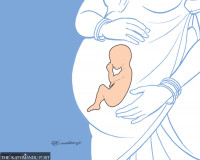Health
Nepal performs more C-section deliveries than WHO recommendations
Private hospitals perform such surgeries three times more than state-run hospitals.
Arjun Poudel
One in five women in Nepal give birth through Caesarean section, according to the findings of the Nepal Demographic and Health Survey-2022 carried out by the Ministry of Health and Population.
Also known as C-section, it is a surgical delivery procedure performed during emergencies.
The final report of the nationwide study carried out between January 5 and June 22 last year with technical and financial support from the USAID stated that 18 percent of live births or stillbirths were delivered through C-section in the two years preceding the survey.
“As per the World Health Organisation, up to 10 to 15 percent of C-section deliveries in the general population is normal, but our C-section delivery rate is 18 percent in the general population,” said Nisha Joshi, a public health official at the Family Welfare Division of the Department of Health Services. “The C-section delivery rate at private hospitals is several times that of state-run hospitals.”
Caesarean section is lifesaving when vaginal delivery poses a risk to the mother or baby due to obstructed labour, foetal distress or an abnormal position of the baby, doctors say. However, the use of C-sections without medical need can place women at risk of short- and long-term health problems, according to them.
The report shows that 15 percent of births in public sector health facilities were delivered via C-section, compared to 51 percent in private hospitals.
Health ministry officials say that the C-section delivery rate at some private hospitals in big cities including the Kathmandu Valley is around 90 percent.
“Private hospitals have their own explanations about the higher number of C-section deliveries,” said Joshi. “We cannot prevent hospitals from carrying out C-section delivery, and the hospitals say all C-section deliveries were performed due to complications.”
Some referral hospitals have up to 35 percent C-section delivery rate. Referrals from remote villages pushed the rate at these hospitals, according to officials.
The proportion of live births delivered via C-section has increased steadily over time, from one percent in 1996 to 10 percent in 2016 and 18 percent in 2022.
The studies show deliveries via C-section are higher in urban areas (22 percent) than in rural areas (12 percent). The report also shows that educated women are more likely to undergo C-section delivery than uneducated ones.
According to the report, only eight percent of births to mothers with no education were delivered via C-section, compared to 48 percent of births to mothers with more than a secondary education. C-section deliveries increase with increasing wealth, from six percent in the lowest quintile to 38 percent in the highest quintile. Quintile is any of five equal groups into which a population can be divided according to the distribution of values of a particular variable.
Excessive bleeding after childbirth, pre-eclampsia and eclampsia, (pregnancy-related high blood pressure disorders), are some of the major causes of maternal deaths in Nepal.
Gynaecologists say there are several other conditions in which C-section deliveries are needed and if surgeries are not done in time, both the mother and the unborn will be at risk.
They say that C-section delivery is needed if the expecting mother’s first baby was delivered through C-section, if the baby is in an abnormal position, if the baby doesn't change position even after approaching the due date when the labour pain is prolonged, and in cases of foetal distress, birth defects, a chronic health condition in mother, and prolapsed cord and placenta, among other reasons.
“C-section delivery rate is alarmingly high at private hospitals,” said Dr Ganesh Dangal, chairman of the Nepal Society of Obstetricians and Gynecologists. “Authorities concerned should continue monitoring and discourage unnecessary surgeries.”
Nepal had reduced the maternal mortality rate from 539 per 100,000 births in 1996 to 239 per 100,000 births in 2016—for which the country even received a Millennium Development Goals award.
The census report prepared by the National Statistics Office shows that in every 100,000 live births, 151 women die from maternity-related complications.
Nepal’s target under the UN’s Sustainable Development Goals is to reduce the maternal mortality rate to 75 per 100,000 births by 2030.




 7.73°C Kathmandu
7.73°C Kathmandu














